Fizik Vento Powerstrap Aeroweave review: turn up the heat, outdoors or in
A highly ventilated road shoe that’s as much at home for indoor training sessions as it is in hot climes
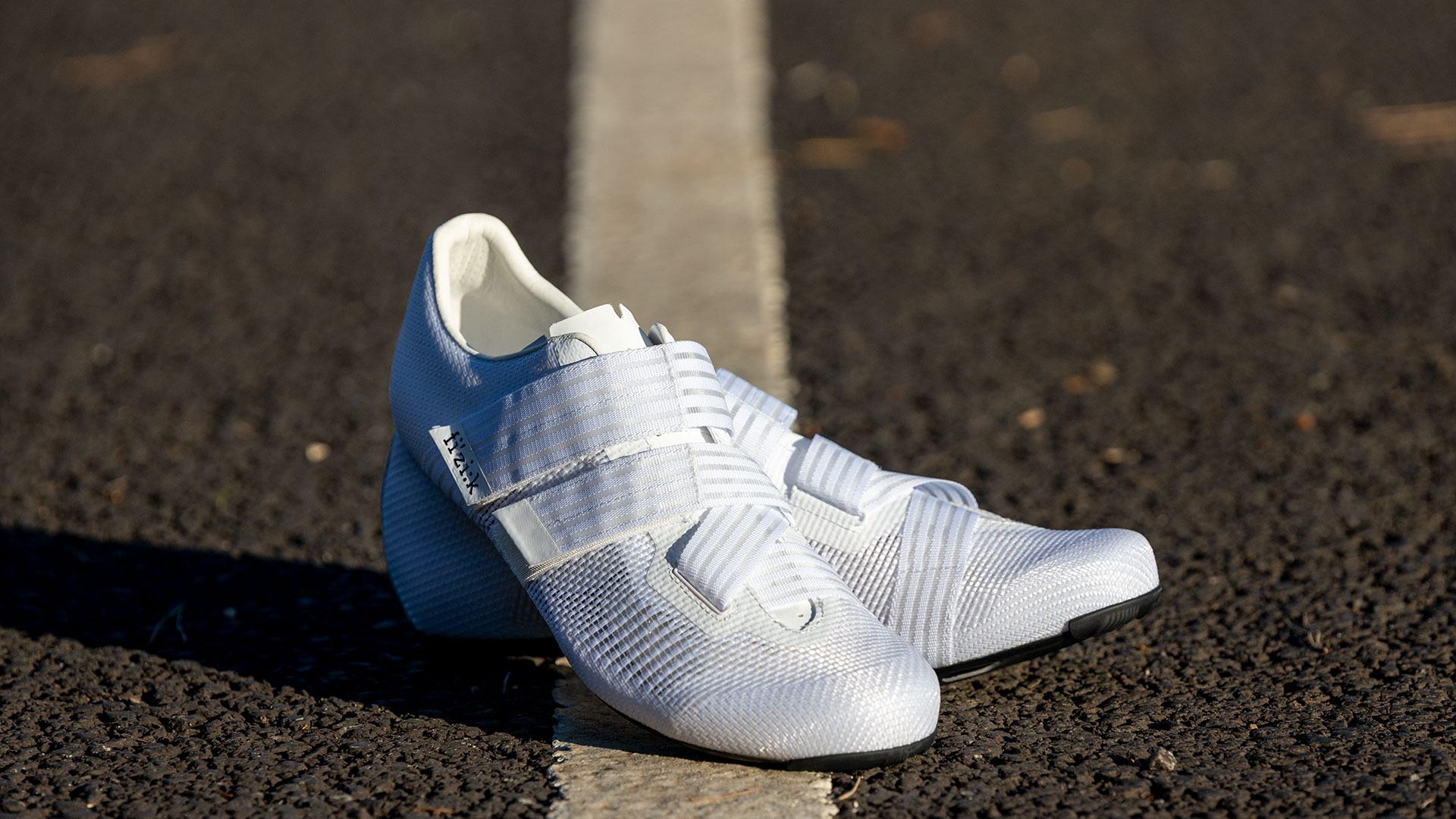
The Fizik Vento Powerstrap Aeroweave is a very cool shoe for hot weather riding or indoor training. Very stiff and as breathable as it gets, this is a beautifully made, featherweight shoe that’s true to size. If I were in your shoes? For truly warm weather riding and indoor training, it’s hard to beat. For cool weather riding, rather you than me.
-
+
Highly breathable upper and sole
-
+
Malleable upper married to a very stiff sole
-
+
Very light
-
+
Minimalist aesthetic, but available in some properly mad colourways
-
+
Superb for hot rides and indoor training
-
-
Too cool for anything but the warmest rides
You can trust Cycling Weekly.

Fizik’s Vento Powerstrap Aeroweave is the brand’s lightest, most ventilated performance shoe. Save wearing a pair of flip flops, or going barefoot, it’s unlikely your ‘dogs’ will ever feel more airy than they do when cycling in a pair of these feather-lights. Which can be distinctly advantageous or downright uncomfortable, depending on the riding conditions. More about that later.
As well as being lighter than hydrogen and better ventilated than a gazebo – I exaggerate, but only slightly – these shoes are among the priciest in Fizik’s range. Originally launched about five years ago, Fizik recently gave the Powerstrap Aeroweave a modest reboot. The changes are slight; the Aeroweave fabric has a subtly different weave, and the R3 outsole, which replaces an R2 unit, now features an additional vent and is marginally lighter.
Fizik products enjoy a characteristically minimalist aesthetic, so, true to form, the Powerstrap Aeroweave displays exceptionally clean, uninterrupted lines that flow particularly well in the dazzling white-on-white colourway reviewed here. If that looks too boring for you, the shoe is also offered in a couple of more ‘out-there’ colour options – coral/orange and light violet/neon green.
Is it worth dipping a toe in? Let’s find out.
Construction
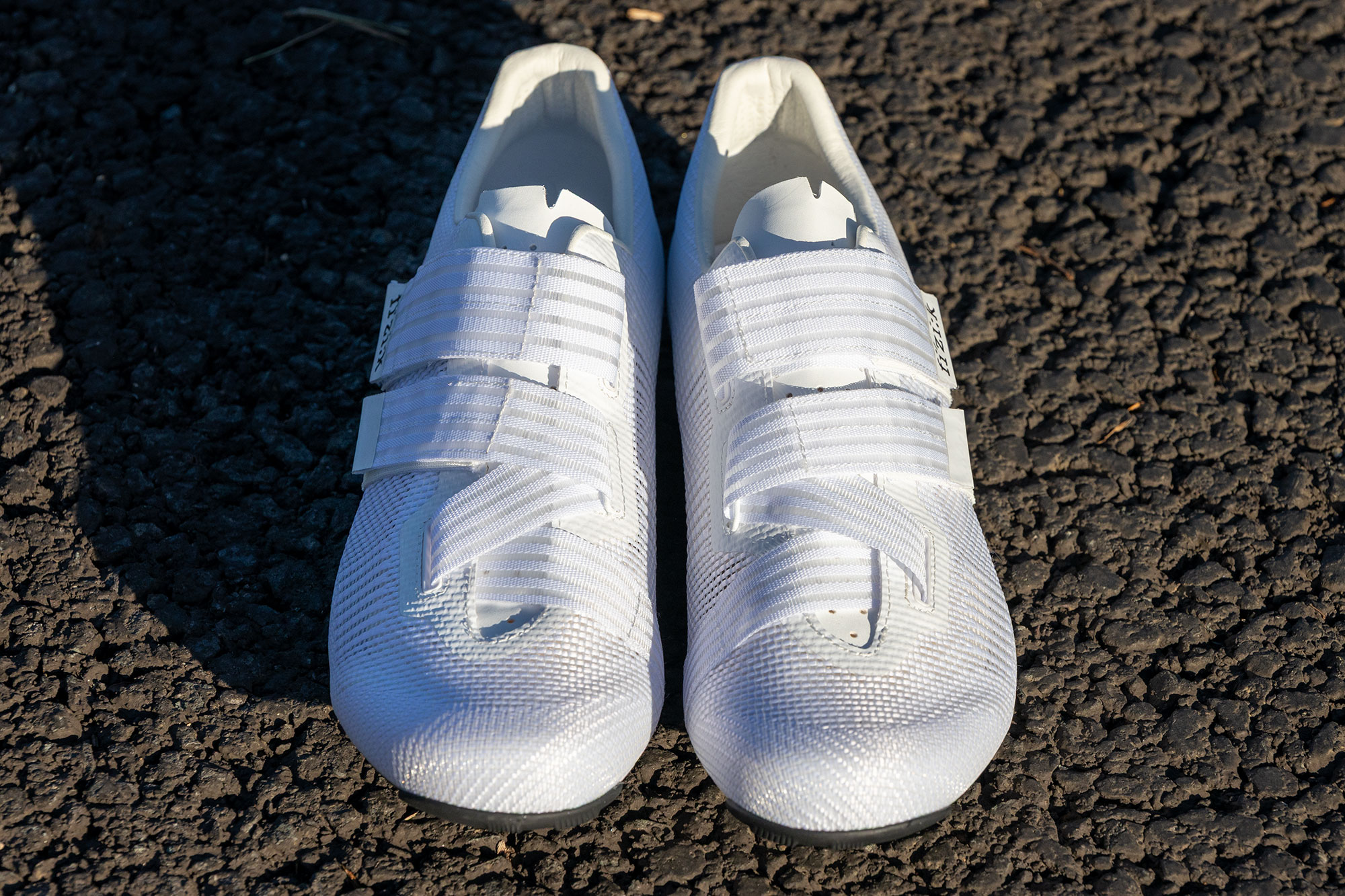
Everywhere you look, there's mesh, except for the PU tongue.
Even the briefest glance reveals how the Powerstrap Aeroweave earned its name. Its most striking features are the two wide Velcro ‘power strap’ fasteners and its mesh-like woven upper. If you hadn’t already guessed, this is a shoe designed for properly warm conditions. Tepid, balmy, or temperate weather won’t cut it; to wear these, it needs to be sweltering, scorching, or sizzling. Preferably all three.
The upper fabric has more holes than a rusty sieve. It’s a very open weave, but one that’s denser in areas requiring more support, such as the heel cup and toe box. In the midfoot and metatarsal regions, where your feet are more prone to sweating, the gaps between the threads are easily a millimetre or more across – you can quite literally see straight through the fabric.
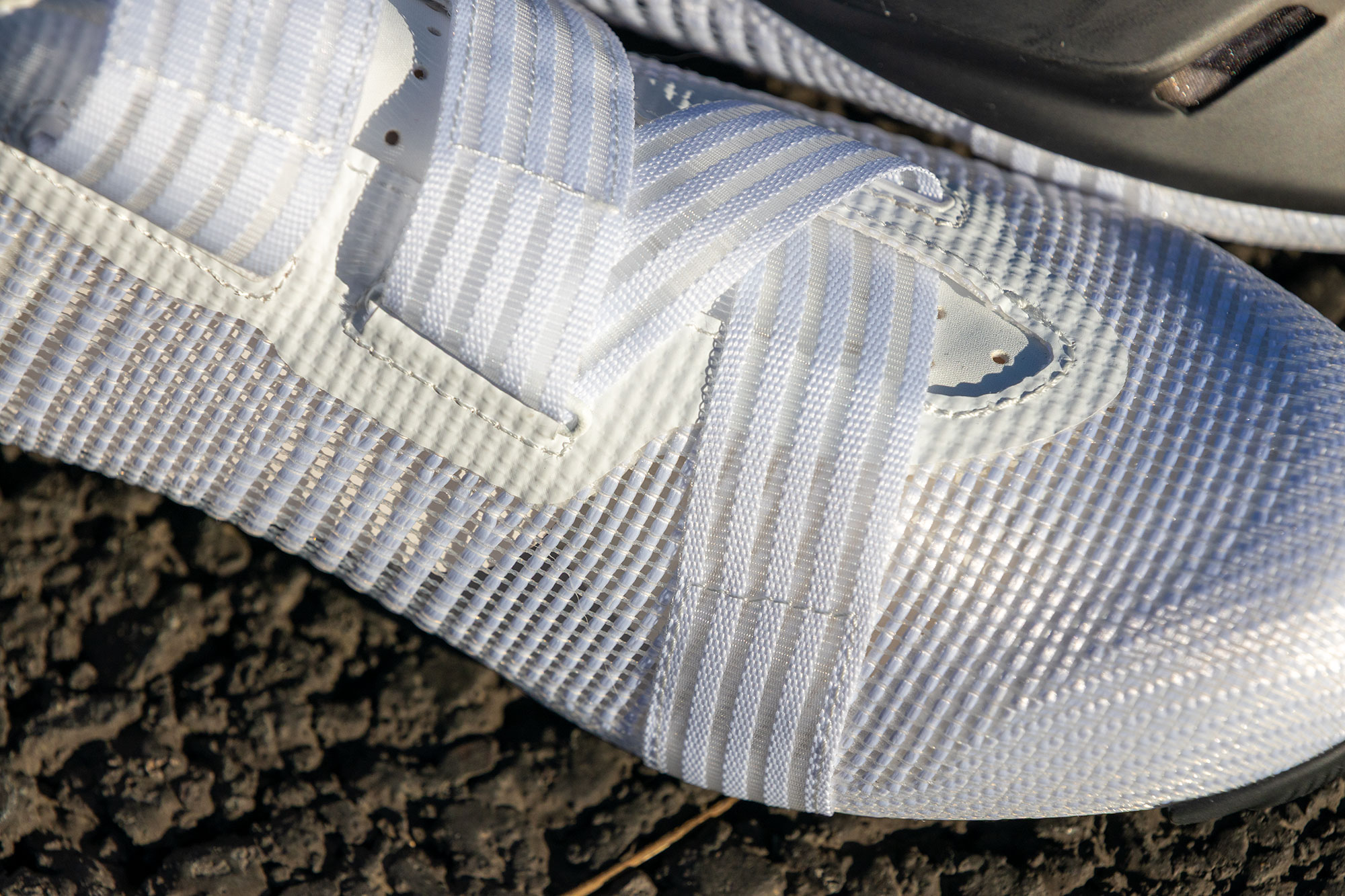
The weave is extremely open in the areas where most airflow is required.
Of course, a loosely woven fabric isn’t ideal for a race shoe because a stretchy upper that doesn’t securely lock the foot in place will sap watts, which is why you often see sprinters tighten their shoes immediately before they put the hammer down. Fizik’s Aeroweave may be open, supple, and relatively soft to the touch, but it is also very taut with little to no noticeable stretch. Fizik achieves this by weaving fine-gauge nylon fibres with filaments of thermoplastic polymer to create an inelastic knit.
The latest race content, interviews, features, reviews and expert buying guides, direct to your inbox!
The tongue is made of perforated polyurethane (PU), as are the heel cup liner and the modestly padded cuff. As expected with such a lightweight, highly ventilated shoe, the Powerstrap Aeroweave’s interior is spartan. Both the heel area and the toebox are lined and sturdily reinforced, providing structure to an otherwise very open upper, but that’s about it.

The wide Velcro straps provide infinite adjustment, but they're challenging to fasten on the move.
Fizik says its Powerstrap closure system does more than simply pull the two sides of the upper together like a suture. The forward strap, which zigzags across the opposing sides of the shoe, from the MTP joint (big toe) to the rear of the midfoot, envelopes and supports the entire front of the foot. The slightly wider second strap travels from the upper midfoot to just forward of the heel cup.
The R3 sole, in common with its R2 predecessor, is super rigid, rated 10 out of 10 on Fizik’s stiffness scale. It feels silky smooth to the touch, with no visible carbon weave and minimal detailing, apart from a small Fizik logo.
For obvious reasons, larger, longer soles tend to exhibit more of a tendency to flex than petite sizes. Nevertheless, there’s no way I can persuade my giant size 48s to budge a millimetre, torsionally, laterally or vertically.
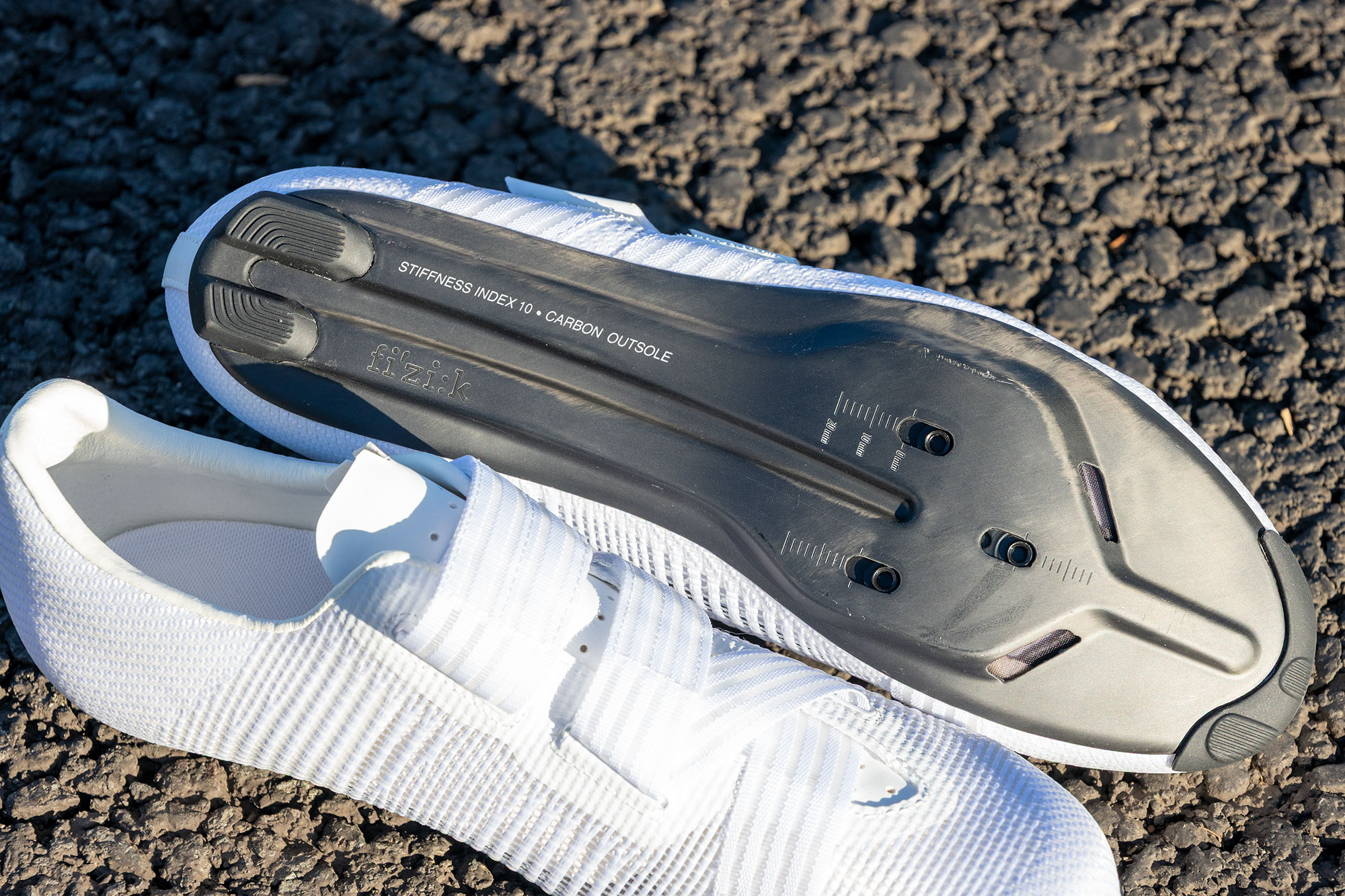
The carbon sole is super rigid and extremely light.
Two large vents in the metatarsal area, up from one in the R2, direct a substantial flow of air to the soles of the feet, keeping them as fresh as their dorsum counterparts. No exhaust outlet is necessary because the airflow readily vents through the mesh of the upper.
The recessed three-bolt threaded base plate is set fashionably rearward to reduce pressure on the metatarsal area, calves and knees. Additionally, the plate adjusts approximately 10mm fore and aft for fine-tuning your cleat position. The sole, even in the cleat area, is very low profile.
These are not shoes you’ll want to spend any time walking in, but to save you the embarrassment of skating across tiled café floors, flat white precariously in hand, Fizik has installed a token rubber heel patch and a slim toe guard/bumper.
The Ride
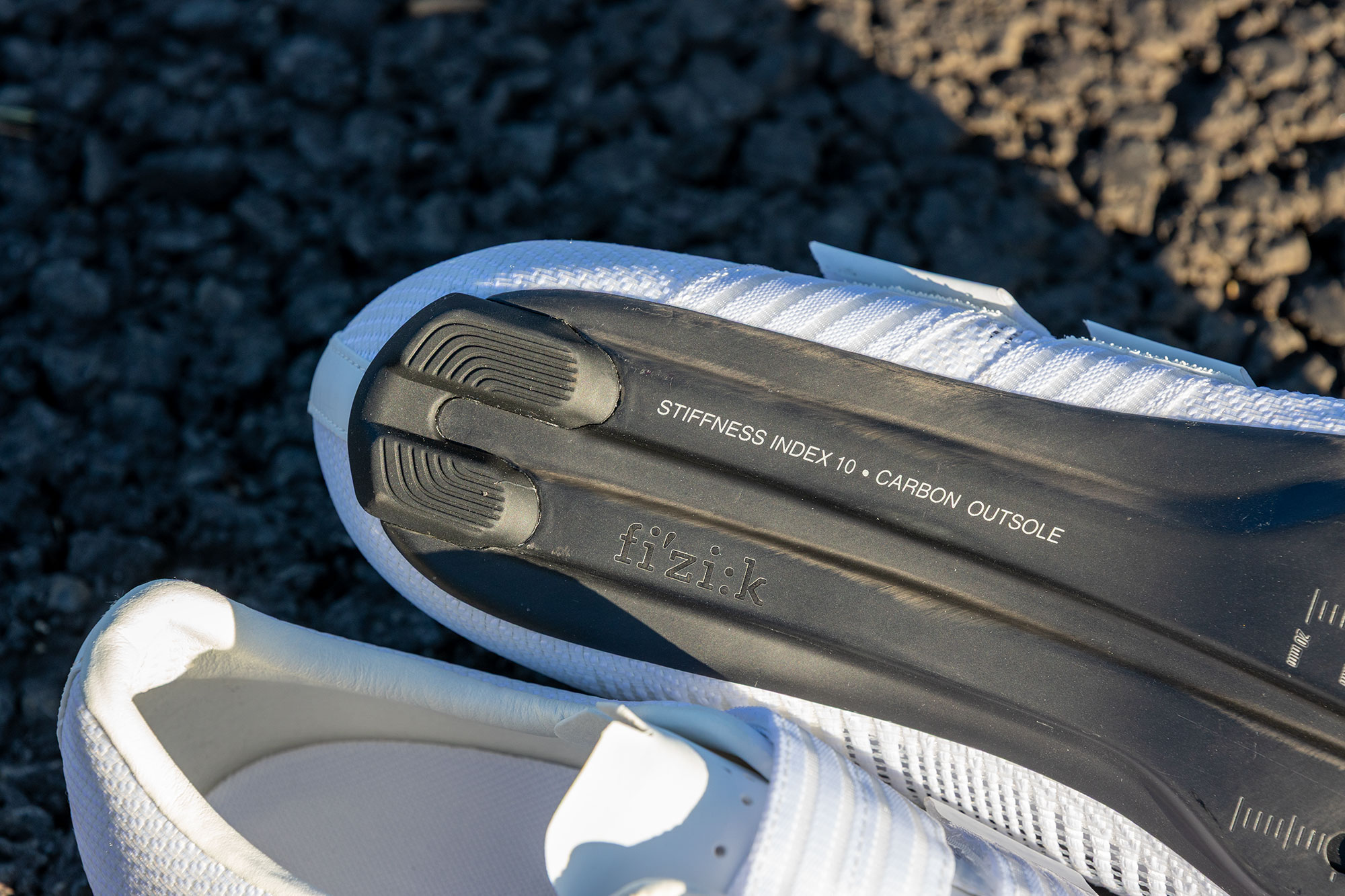
Two small rubber tread blocks on the heel enable some limited walking.
Initially, I was concerned that the mesh upper would either be too loose or too unforgiving, but I need not have worried. It turns out that stretch and malleability – the propensity for the fabric to conform to my feet – are two completely independent qualities.
I’ve reviewed Fizik shoes in the past and have always been impressed with their fit, which tends to suit my large but regularly proportioned feet. The Powerstrap Aeroweaves are slightly narrower than my usual go-to pair of Fizik Tempo Decos Carbon shoes, but only by a millimetre or so. I’ll happily go slightly wider but refuse to entertain riding with anything narrower, because my feet tend to swell on longer rides.
Once I accepted that adjusting shoe fit mid-ride isn’t going to happen, I started to fall in love with Velcro fasteners again. No, they aren’t as convenient or as instant as Boa dials, and they don’t look as premium. However, they are infinitely more adjustable, provided you take the time to tighten them optimally before you begin your ride. Fizik’s implementation of the Powerstrap system really does a great job of cradling and supporting the foot securely. It also offers a wide opening, making it easy to put them on – with some shoes, often the hardest part of the ride!
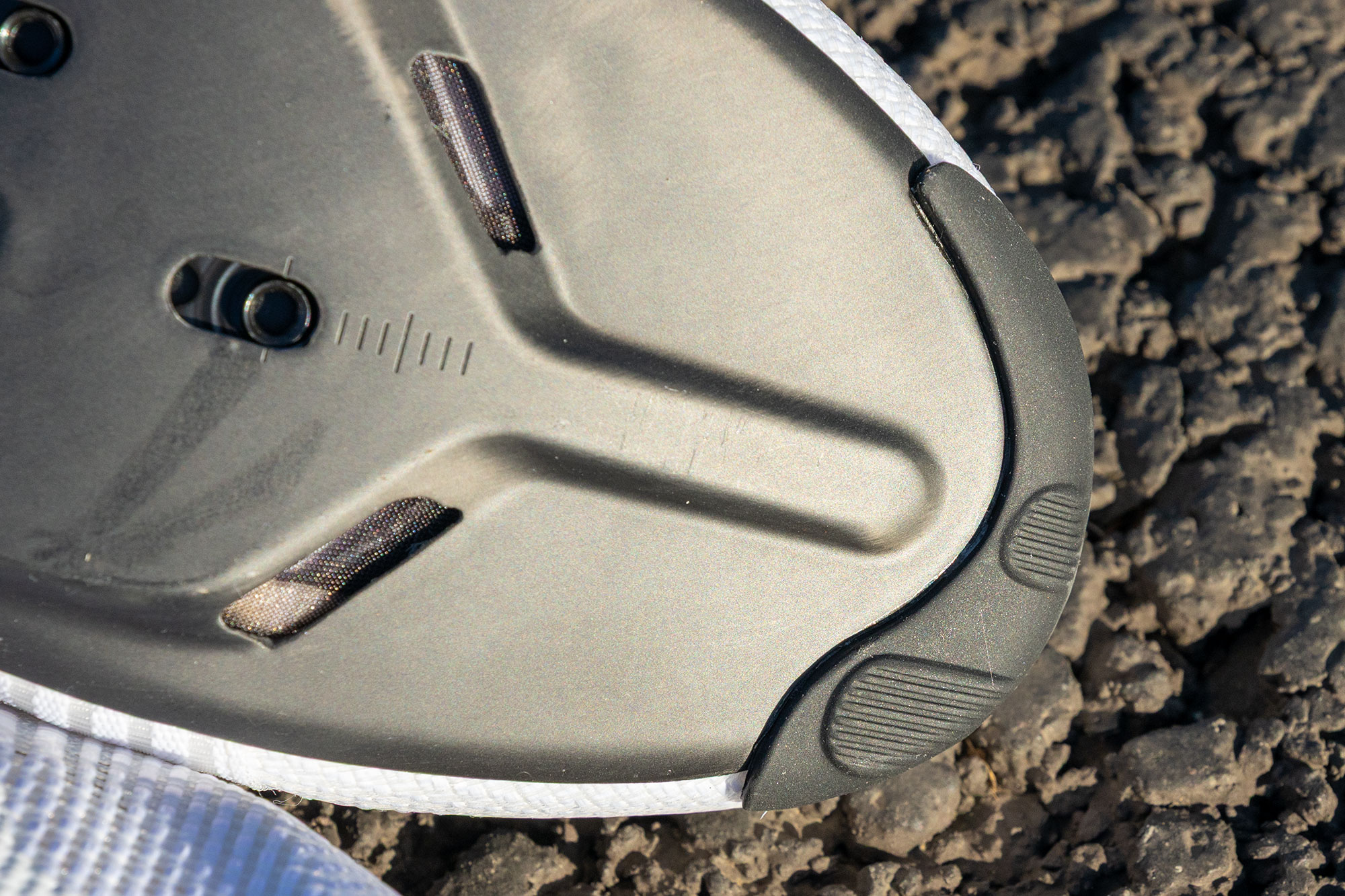
Note the pair of huge air inlets in front of the cleat area.
Talk of fit is, of course, a nonsense because the perfect shoe for me might be insufferably uncomfortable for the next rider, but I’ve consistently found that Fizik’s fit is true to size. Certainly, they’re not a narrow shoe by default, which I find many Sidi and Shimano shoes to be. Fizik offers a good range of shoes in a wide fit as well, but unfortunately, the Powerstrap Aeroweave is not among them.
As expected, the sole is super stiff, which suits my preference for longer rides that require zero walking. Not only do stiffer shoes feel more responsive, but as long as my feet are evenly supported, I find I’m less prone to hotspots with a rigid sole. Potential heel lift, which can be an issue with shoes that have very rigid soles, is effectively prevented by the shoe’s deep heel cup and Fizik’s distinctive silicone micro-dot grippers, which cling tenaciously to the base of the Achilles tendon.
They are beautifully light to wear. When I first tried them, after snugging down the Velcro, I remember the peculiar sensation of them almost not being there as I took a few tentative steps to my bike. Once in the saddle, however, basic physics dictates that any weight saving – Fizik’s least expensive shoe, the Vento Omna, only weighs about 100g more per pair – will result in negligible performance gains.
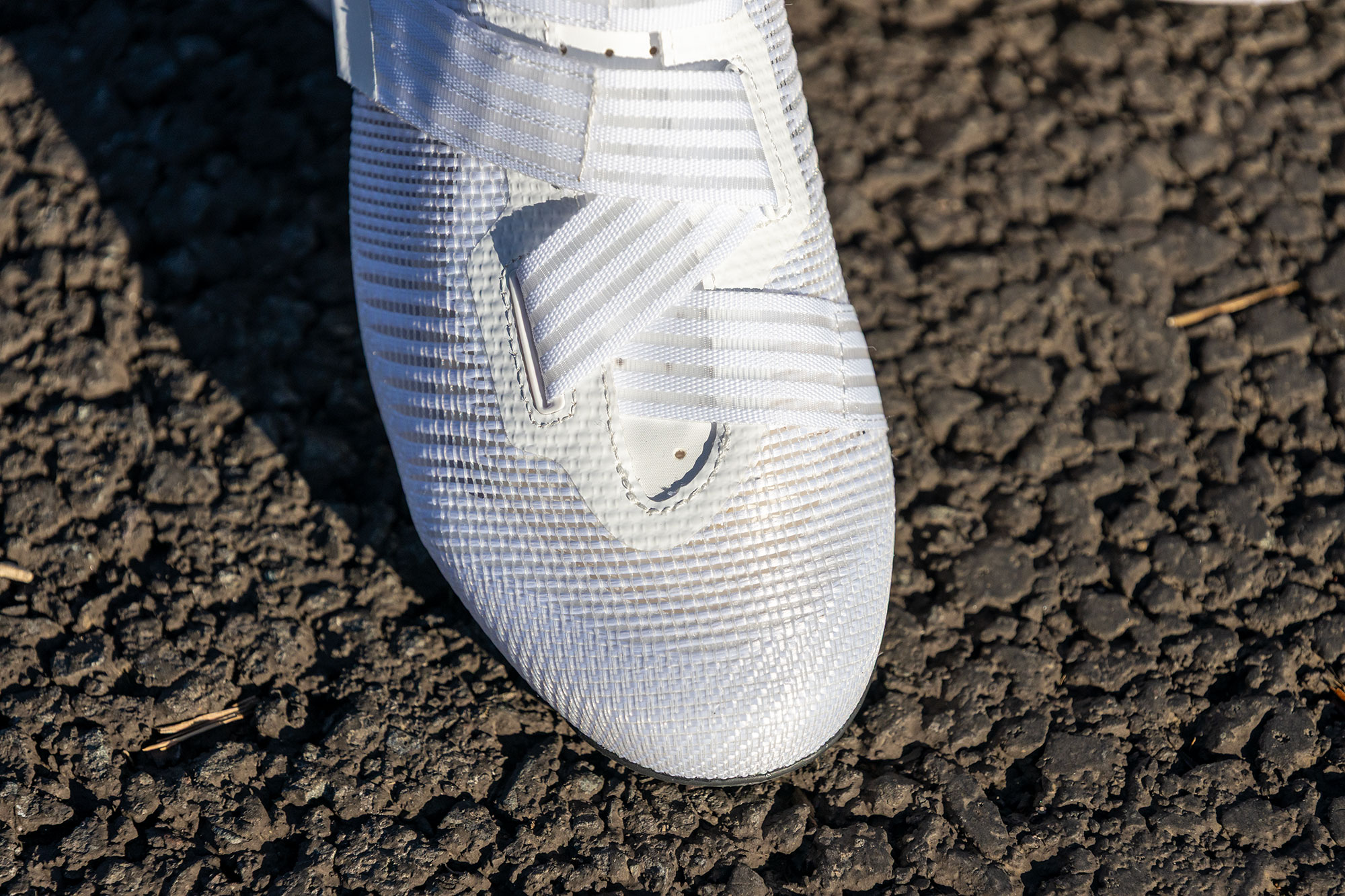
The shoes are beautifully light to wear.
So far then, thumbs up from me, I found these shoes near faultless. That is, provided I cycled in the blinding white heat of a sunny mid-summer’s afternoon when every other sane person has retreated inside, shades drawn until the cool of the evening. I’m exaggerating, but these are not shoes for mild weather, which poses a problem in temperate regions like northern Europe.
I find that, below about 20°C (68°F), my feet quickly become miserably cold due to wind chill when wearing these shoes. Mid-twenties (77°F) are tolerable, but it’s not until the mercury rises to at least 28°C (82°F) that my feet start to feel, well, normal.
So what? Even in the UK, we experience plenty of summer days that see temperatures above 25°C (77°F). The issue is that, although most morning rides may eventually peak under the warm midday sun, the temperature at the start is more likely to be below 15°C (50°F), which is too cold for these shoes.
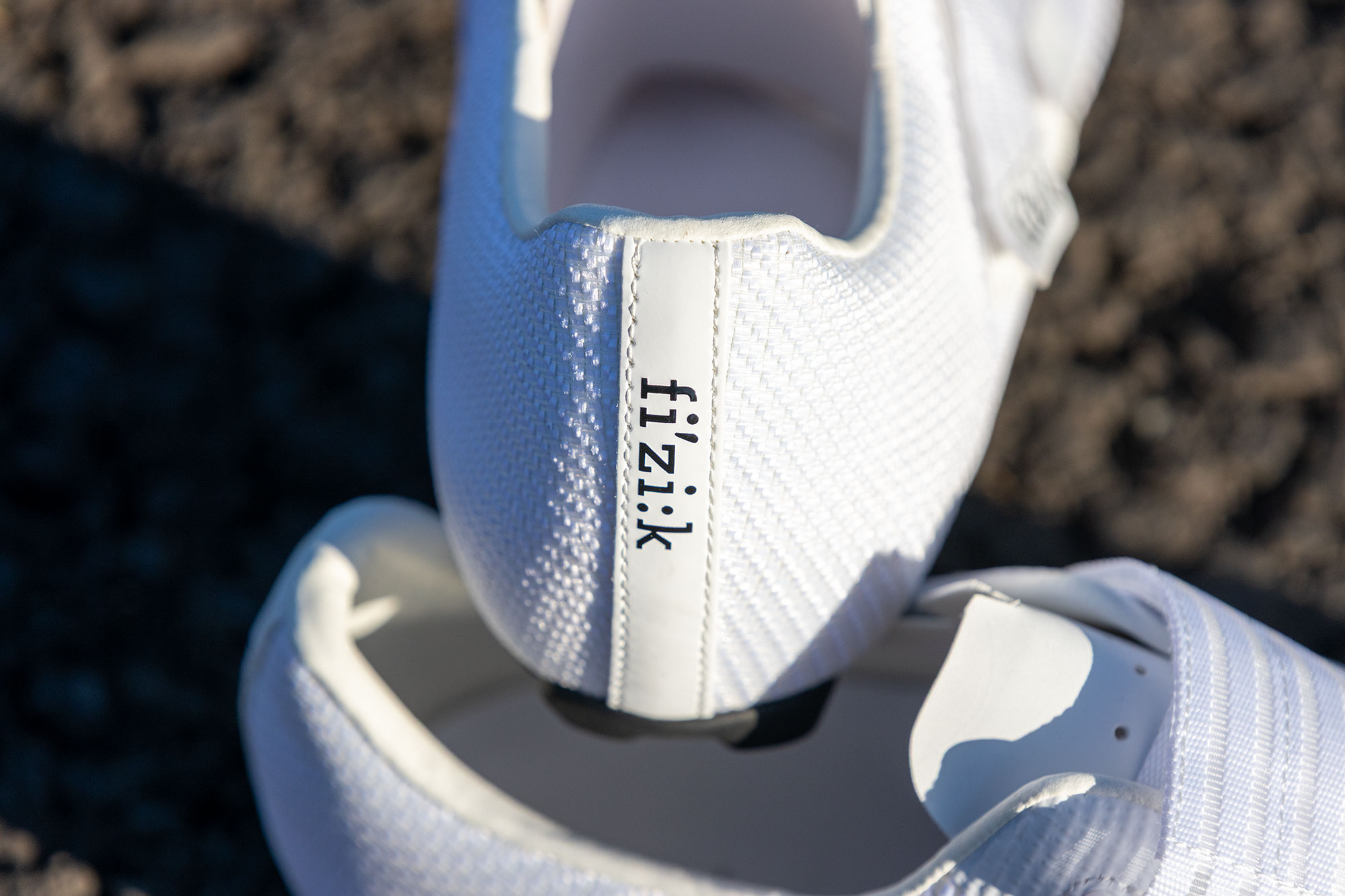
The heel, and the toebox, are reinforced to add structure as well as some protection.
Once up to temperature, they work beautifully. The open weave around the midfoot and the two gaping inlets in the sole excel at cooling the hottest, sweatiest parts of my feet. It’s not that my feet necessarily feel exceptionally comfortable, but rather that I simply don’t think about them at all. The feet, and the hands for that matter, serve as key regulators of core body temperature, which is why it’s important to keep them happy.
So, if you live or frequently holiday in sunnier climes, great – whip out your credit card now. Similarly, if you’re more tolerant of the cold (or less tolerant of the heat), they’ll make a great purchase. But for me, they have limited use during our variable and unpredictable summers here in the UK.
Counter-intuitively, they’re a fantastic winter shoe, not for freezing jaunts on icy tarmac but for the more civilised pursuit of indoor training. As we begin to progress through autumn, my pair of Powerstrap Aeroweave shoes has regained favour, helping me to power through FTP tests on Zwift while trying to stay cool.
Value and conclusions
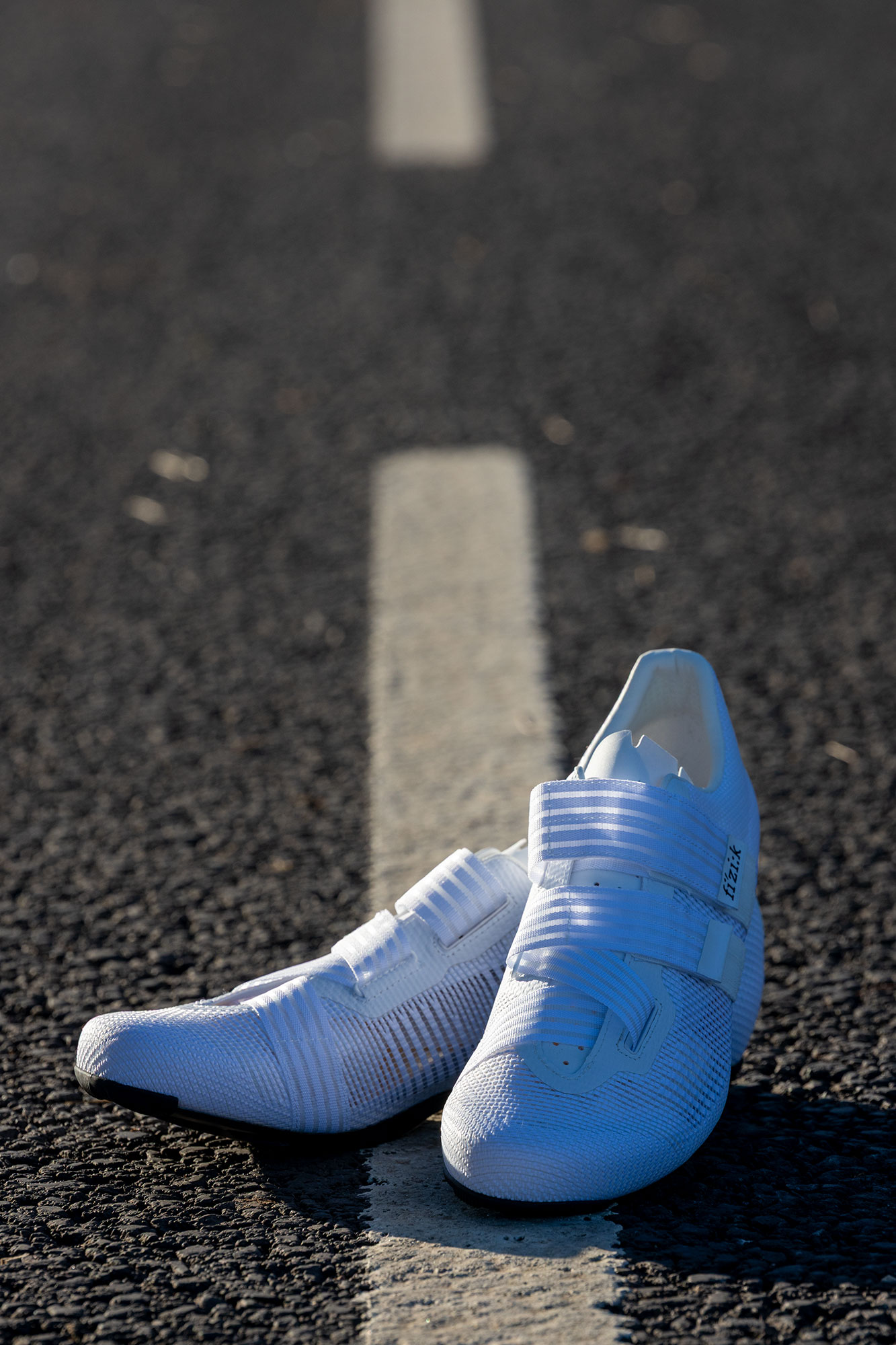
They look fantastic. More colourful options are available too.
Let’s not beat around the bush. If I had to choose just one pair of cycling shoes to wear for the rest of my life, the Powerstrap Aeroweave would be very near the bottom of a lengthy list. This doesn’t make them a bad shoe, far from it. For highly specific applications – hot weather riding or as an indoor training shoe – they’re hard to beat.
Fit is true to size, the materials used are top rate, and they successfully shift a lot of air to exactly where it’s needed. They are also astonishingly light, but that’s unlikely to provide anything but marginal gains for most of us.
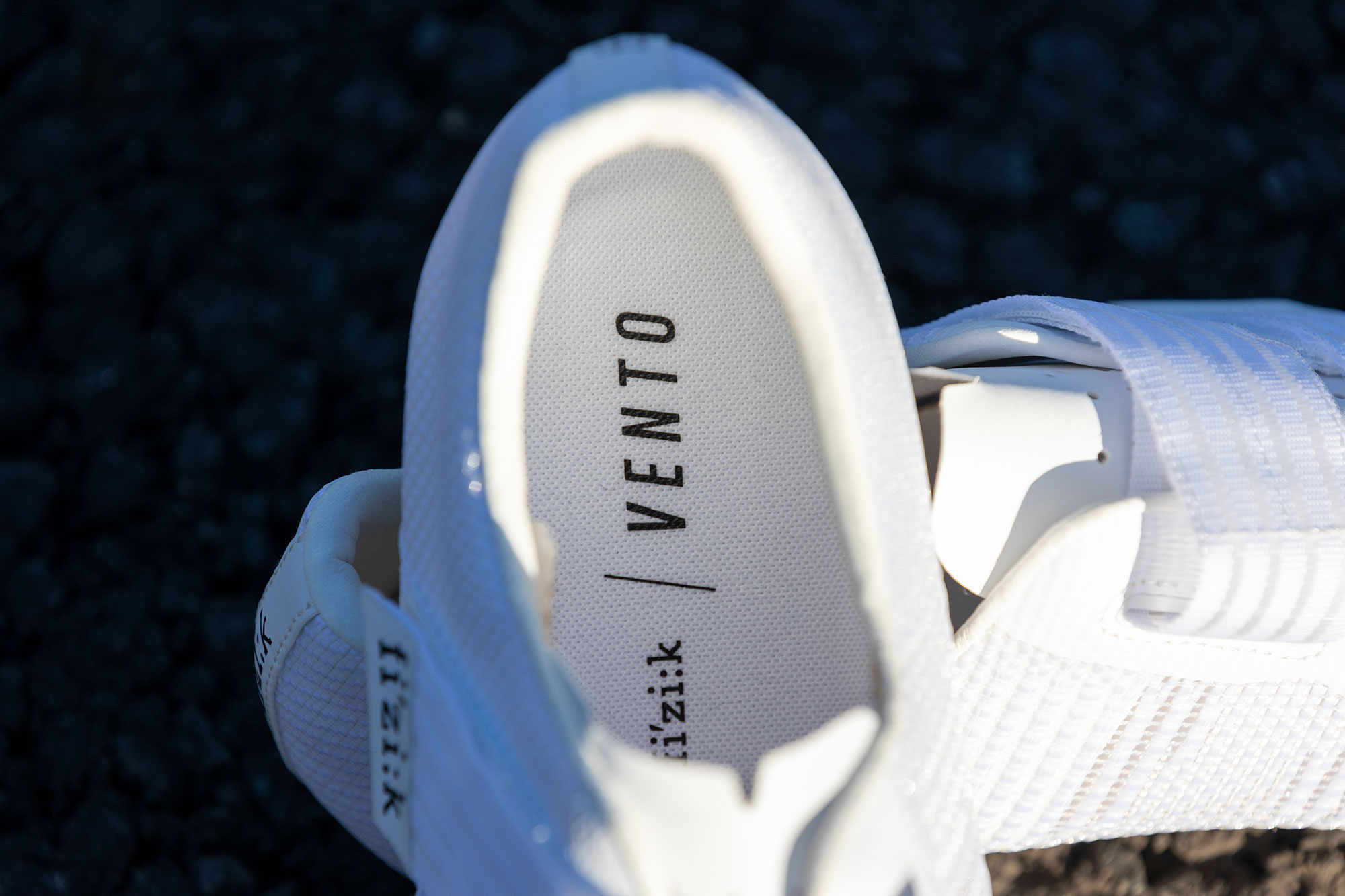
It's an expensive shoe, but compares well to its rivals.
Fizik’s shoes are premium products with prices to match, yet the Powerstrap Aeroweave at £334.99/$419.99 compares favourably to its rivals. Trek’s knitted RSL retails at an eye-watering £399.99/$549.99, and the highly ventilated DMT KR0 is slightly more expensive in the UK but considerably dearer in the USA at £369.99/$519.99. However, if you’re working within a budget, DMT offers a broad selection of shoes with knitted uppers, including the KR30 at £239.99/$339.99. Another bargain, if you can find a pair, is the Specialized S-Works Vent, which is currently £200 in the UK but only available in limited sizes on Specialized’s store site.
If the concept of the Powerstrap Aeroweave appeals to you but the execution is too drafty, it’s worth considering Fizik’s latest road shoe, the Vega Carbon. It features a slightly wider fit, a lower drop height, and is well-ventilated at the forefoot but more enclosed elsewhere.
In a nutshell, the Vento Powerstrap Aeroweave is definitely worth considering, but only if the sun’s shining or your indoor trainer is fired up and ready to go.
Specs
While the revised Powerstrap Aeroweave is available in a wide range of sizes and three colourways, the original version is also still in stock on Fizik’s website in black and dark blue. The price is the same.
- Price: £334.99/$419.99
- Sizes: 36 to 48, including half sizes from 37.5 to 46.5
- Colours: White – White, Light Violet-Neon Green, Coral-Orange
- Upper: Nylon/Thermoplastic
- Sole: Carbon fibre. Stiffness rated 10/10 on Fizik’s scale.

Simon spent his childhood living just a stone’s throw from the foot of Box Hill, so it’s no surprise he acquired a passion for cycling from an early age. He’s still drawn to hilly places, having cycled, climbed or skied his way across the Alps, Pyrenees, Andes, Atlas Mountains and the Watkins range in the Arctic.
Simon now writes for Cycling Weekly as a freelancer, having previously served as Tech Editor. He’s also an advanced (RYT 500) yoga teacher, which further fuels his fascination for the relationship between performance and recovery.
He lives with Jo, his yoga teacher wife, in the heart of the Cotswolds, with two rescue cats, five bikes and way too many yoga mats. He still believes he could have been a contender if only chocolate weren’t so moreish.
You must confirm your public display name before commenting
Please logout and then login again, you will then be prompted to enter your display name.